|
I‘ve enjoyed Scott Snyder’s work in the past and was excited to find his newest series at the library.
And then I began reading this graphic novel and the excitement began to dampen. So now I have to put my thoughts in writing and figure out why. Well, first off, the art leaves a lot to be desired. The more graphic novels I read, the more I enjoy…well, originality. Even if it isn’t picture perfect. And this at was just so bland. Vivid and all that, but bland. All the characters looked straight out of general casting. Perfectly serviceable, of course, but nothing special. But mainly, I believe it might have been the plot itself. The grand idea of USA isolating itself from the world and turning into a wildly bizarre Mad Max-like society is conceptually insurging, but the story was so busy and jumped so frantically all over the place, that it was difficult to properly engage with. Maybe now that we know the characters’ backstories and motivation, the narrative can streamline into a more cohesive, more immersive story? I suppose I’ll have to read book two to see. Scott Snyder has always had a certain fascination with Americana. Used to put vampires in it. Now it’s…well, different creatures. Very much like something out of Mad Max but with Mummy dressing sensibilities and some original ideas about…personal ornamentation. Entertaining enough though nowhere near wow quality.
0 Comments
Insane. Manic. Wildly entertaining.
I enjoyed Doug Wagner’s Beware the Eye of Odin and wanted to see what else he got up to. Apparently, this. A heartwarming tale of friendship, psychopaths, and serial killers. In Vinyl, a serial killer losing his memory calls up on his murdering buddies to save his bestie who also in a major conflict of interest is an FBI agent. Murder and mayhem ensue. Vinyl’s more of a collaboration for Wagner since he no longer is doing double duty with both art and story, but it works out nicely. I mean, yes, the plot is kind of muddled at times, but honestly, who’s going to read a book like this for the plot alone? The in-your-face guts and gore are all there. Set to music, no less. Plus, it’s a quick read. Fun, if you’re in the mood for this sort of thing. And if not, well, why’d you pick up a book with a cover and plot summary like that? Seriously? Catriona Ward’s Sundial dramatically underwhelmed. So I wasn’t expecting much for this, but she’s been a critic’s darling for a while now, so I figured I’d give her another chance and…Yes, that’s more like it.
Looking Glass Sound isn’t merely well written, but it’s as atmospheric and as clever of a book as one might wish for. Tripp in its cleverness, in fact. This novel is so Meta, it’s Meta wrapped in Meta with Meta on top. Which, yes, kind of making it read disjointed and choppy at times and makes your mind twist itself all round at times, but in the end, it’s worth it, if only for how original it is. And yes, for how clever it is. I’m huge on both originality and cleverness. I think there isn’t enough of it in modern fiction where author ply the formula because that’s what sells and I salute Ward for going against the current. Or at least establishing herself enough to be in a position to do so and then going for it. Not sure if this book will appeal to everyone but for fans of thought-provoking, intelligent, smart AND literary genre fiction, this is your ticket. Take a trip to Looking Glass Sound. See what you’ll find in the water there. Recommended. Thanks Netgalley. So Tidbeck’s Memory Theater was mostly the wrong kind of weird for me, but somehow this one, her debut, was the exactly right kind of weird.
In Amatka, or rather on Amatka, the space colony, exists a 1984-style regime. And the colonists fall in line, because they are told it is the only way to survive. Amatka is one of the four colonies (the fifth one failed) and is dedicated to agriculture, specializing in mushrooms. To this bleak place comes a marketing expert/research from the administrative colony, with the goal of finding out what hygienic products the colony could use. So far so straight-forward…until it isn’t. Until we find out that the reason behind the weird naming rituals everyone engages in are so the objects around them can maintain their shape. Until we learn about the secrets the powers that be are hiding and what really happened to the failed colony. Until it gets REALLY WEIRD. Because in a world when you can shape reality with intent and words, there doesn’t have to be any limits. Tidbeck’s writing is best described as Scandinavian minimalism and it works really effectively here, in this ale of repressed society too afraid to open its eyes and minds. Amatka is a stunningly imagined place. The world building here is absolutely first rate. I loved how wild the author’s imagination spun within these pages, creating a pleasantly laconic but striking read. A perfect blend of sci-fi and weird. For anyone looking for something different. Recommended. Ah, another aptly if too-on-the-dead-body named volume. Royal City trilogy wraps up. I’d say too neatly or as neatly as something with the heavily overlaying message of “we don’t know what’s next and that’s okay” can.
Sorry, but Lemire is simply too clever and emotionally intelligent of an author for an ending that simple. That clichéd. And I didn’t care for the writer/movie star resolution either; too “stand by your man”. But overall, Royal City was a very enjoyable read. I loved the art. Loved how well Lemire handled the potent melancholy vibe here. Loved the “haunting” premise. Yes, I expected more of the ending, but apparently (according to the books) that’s okay. So yeah, glad I read it. Remain a fan. Recommended. As the title suggests, book two of the Royal City trilogy takes the readers back to Tommy’s time, mid90s, and walks us through the last days of his life.
Steeped in grungy nostalgia and profound melancholy, the story propels itself to its inevitable tragic ending, providing explanations for the way the Pike family is in present day. Very good. Now let’s see how it wraps up. I’ve long been a fan of Jeff Lemire’s work as both a writer and an artist. In fact, Lemire/Lemire is one of the best combinations. A poignant emotionally engaging storytelling combined with his trademark angularly-featured (seemingly simple, yet surprisingly expressive) faces works really well.
So I was excited for this trilogy and, for the most part, it did not disappoint. Book on introduces us to Royal City. A rather bleak place. The sort of bleakness that gets into one’s soul and lingers. For one family, The Pikes, more so than others. The youngest Pike kid died tragically age 14 and his death had devastating ripple effects on his next of kin for decades. So much so, that they are quite literally haunted by it; haunted by HIM. Only, because Lemire is that clever of a writer, each of the family members sees a different version of their dead son or sibling, the one uniquely suited to them. Very good. book two. Onward to book two. I’ve been waiting to read this book for a very long time. Pretty much ever since I saw the movie adaption. I’ve also read Alderman’s latest (at the time of this review’s publication) novel, Power, and enjoyed it very much and am excited to see how Prime adapts it.
Anyway, our library system has just now gotten a digital copy of disobedience, so yey, I set off to read it immediately. And what a mixed bag of impressions… I shall attempt to sort through them now here. First off, beginning at the end, I didn’t like the ending of the movie and was hoping the book had a different one. It did…and I didn’t like that one either. But hey, you know how they say write what you know? Well, Alderman raised into the exact same Orthodoxy in the same neighborhood as the book is set in, really used all she knew of her religion and surroundings in her debut. And because she is genuinely gifted writer, she makes that world come alive: every texture, every flavor, every claustrophobic mindset and attitude. It stands to mention that at the time of writing the novel, Alderman was a practicing Jew who has since left the religion or (in her own words) “wrote herself out of it. But she wrote the novel still in her faith, albeit likely questioning, and it shows. This is no Women Talking, this is a very favorable representation of an extremely oppressive (particularly to women) way of life. The kind that had driven one of the novel’s protagonists, Ronit all the way across the ocean, and left the other, Esti, all but crushed. Now Ronit return to bury her father, The Rabbi, stirs up all sorts of dormant emotions and sets tremors through the entire suffocatingly tight community. It shakes it up just enough for something approaching a change but one so minute and insignificant, it barely counts. Oddly enough, it is neither Ronit nor Esti that seems to be the rmotional backbone of this story, but Dovid, Ronit’s cousin and Esti’s spouse and the Rabbi’s proposed successor. This is likely due to the fact that neither Esti nor Ronit are all that likeable or engaging. That’s probably the main difference from the movie. Aside from the fact that the movie cast was much, much older than the book’s. Aside from the fact that the movie was much more romantic than the book. Aside from that WTF-kind-of-message-is-that ending of the book. Wherein in the movie it was just vague and underwhelming. And then, there’s the fact that each chapter of the book begins with a sermon on Jewish religion, which is enlightening but very…um…preachy. Yes, it’s important because it helps you understand the characters, their actions, their world. But it’s a lot. And it’s presented in a way that seems to approve and support the very restrictions and attitudes that make the lives of the characters so terrible. So, you know…it’s complicated. And nowhere near critical. In a way, the readers are left to draw their own conclusions. Apparently, the author did too. Still though, the writing and immersive depictions go, this is first rate dramatic literature. Recommended. This was just pure fun. Pure Viking fun. A classic saga premise of a grand quest involving a mythical object and a motley cast of characters. Oh, and Trolls. Oodles of them.
Basic plot: a brash prince sets off to return the titular object to its owner or die. The prince is joined by a one-armed great warrior with a fun mace-like weapon and a young woman who thinks she’s a Valkyrie. They go on to have all sorts of adventures and battles most of which involve Trolls. Energetically told with great technicolor art to boot, this was such an entertaining read. No matter how valiant and heroic the protagonists are, the Trolls totally steal the show. I was only familiar with Nutting through the TV adaptation of Made for Love, which I liked very much. So I figured I’d check out her debut. Made for Love made me expect cleverness and originality. It certainly did not make me expect Tampa. I don’t know how anyone anticipates a book like that. In fact, honestly, I’m not sure how it ever got published.
Which isn’t to say it’s a terrible book that doesn’t deserve to see the light of day so much as to say it’s way too in-your-face controversial for the delicate modern audiences. And yes, the book’s a decade old, but still…the reading audiences have only been getting more delicate with time. People can scarcely read books without content warnings now. And the contents of Tampa are rather…shocking even to a seasoned and diverse reader. Tampa is told from an almost stream-of-consciousness perspective of a predatorial female pedo. Or maybe that’s a redundancy? No, probably not, because Celeste is highly and unapologetically aggressive in her pursuits of teenage boys. Not just any, she has a very specific type, the barely-teens, fourteen, ideally. To that end, she gets a job as a middle grade teacher, as perfect of a hunting place as any pedo could ask for and then proceeds to find and seduce her victims. This novel is as brashly graphically sexual as it is controversial too. Celeste is constantly horny. The man she married can’t possibly satisfy here since he’s, you know, an adult man. And the boys she chooses, she just can’t get enough off. I’m no prude, and Celeste sexuality was still overwhelming. And also, just difficult to read about at times for obvious reasons. But for all its difficulties and nothing even remotely resembling easy likability or any likability, the novel does have that certain something—it is propulsive. Celeste is as amoral or morally repugnant of a protagonist as you can have, but her shamelessness, her blatant satisfaction of her appetites at all costs makes her strangely compelling like American Psycho or any other psycho. Or even Ted Bundy…a man who people found so charming, even at his own trial. And you know why Tampa has that? Because Nutting is a clever author. She really is. Because she takes the opportunity to explore our cultural obsession with beauty by showcasing how much her stunning gorgeous, superficially charming sociopath Celeste can and does get away with. Because Nutting doesn’t take the easy way out with her character by throwing in some twee remorse or cheap easy ways out. Celeste, for all her numerous faults, stays the course. She rejoices in her monstrosity. And the other clever thing about this novel is how subtly showcases the damage someone like Celeste can cause a young person. Because fundamentally no matter what centerfold dreams a teenage boy might have and no matter how stunning Celeste is, what she causes is severe damage. Still, though, how did this get sold? Or marketed? As a gender-flipped Lolita? But that book is practically chaste and moral when compared to Tampa. I guess hit just the right subversive notes. Who knows? Either way, an intense read and certainly not for everybody. But it does announce Nutting as a writer to watch. Read at your own discretion. |
AuthorWrite something about yourself. No need to be fancy, just an overview. Archives
December 2023
Categories |

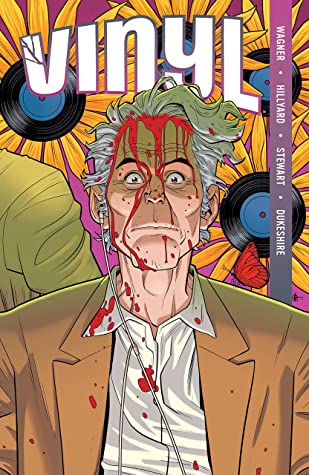
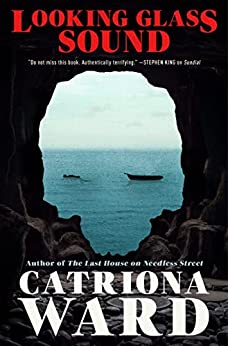
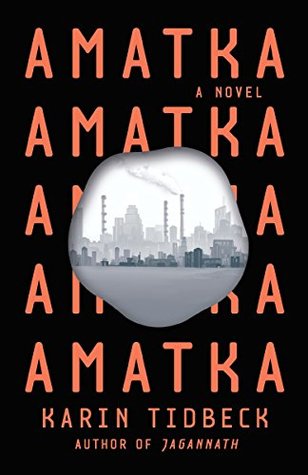

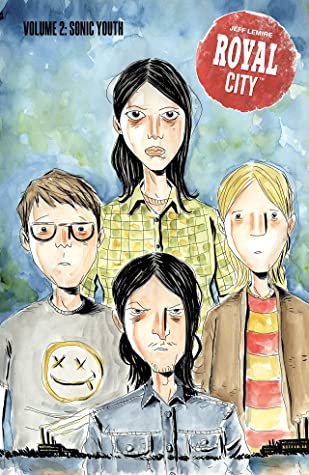



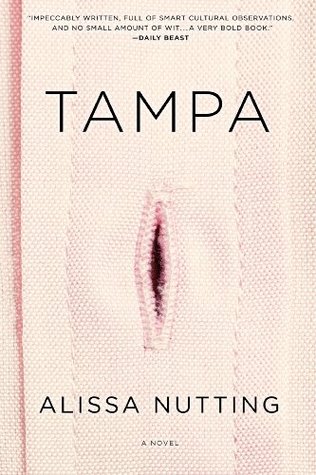
 RSS Feed
RSS Feed
